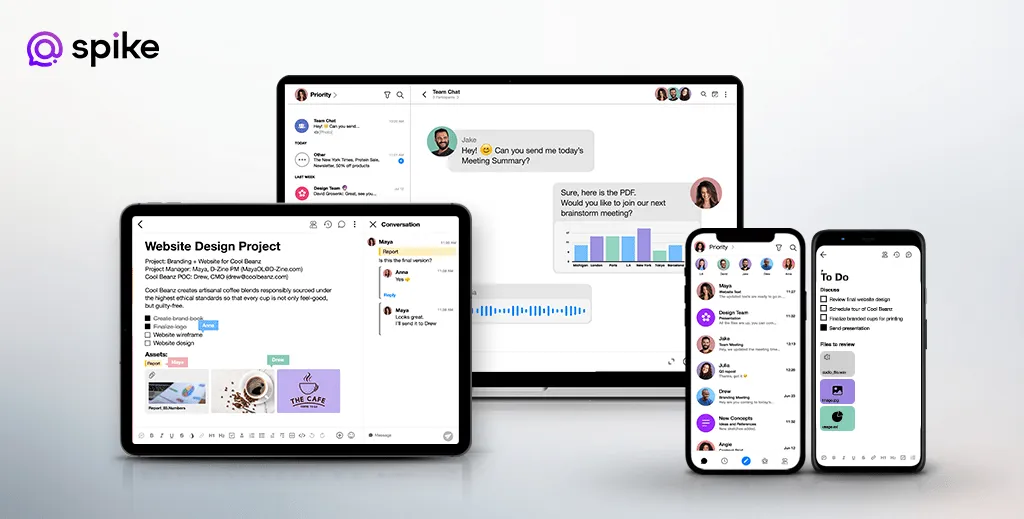Email Automation – What it Is and How to Use It

Email marketing is a vital part of any marketing strategy, especially for companies that operate predominantly or exclusively online. However, there’s no way that large-scale email campaigns can be carried out by people, which is why email automation is so important.
We’re going to look at what email automation is, how it works, some examples of common email automation workflows, and how you can successfully use email automation to grow your business.
What Is Email Automation and Why Is it Useful?
Email automation uses systems to send emails at the right time to the right people, without you needing to manually go in and send them. As consumers, we see automated emails every day – welcome messages, e-receipts, reminders, updates, and more.
Automated email workflows start with a trigger, which could be anything from submitting a form to purchasing an item or even clicking on certain online elements. Your automation system then kicks into gear and sends timely, personalized emails to the target recipient.
Even if you’re brand new to email marketing, the potential benefits of email automation are clear. First, email automation can help you remove repetitive and time-consuming tasks from your to-do list. What’s more, they can help keep your brand visible, with automated newsletters or updates placing you firmly in your customers’ view.
Email automation can also help customers feel more engaged since emails come at the right time for them and are personalized to their needs. All of these benefits combine to help nurture better leads and increase conversions, while at the same time you’re reducing your workload and tasks.
The Three Elements of Email Automation

Automated emails have three key elements that need to be looked at: the trigger, the timing, and the overall workflow. The first that needs to be examined is the workflow.
1. Email Workflows
An automated email “workflow” includes the overall purpose of the email campaign and the customer’s journey within it. When creating your email workflow, you are creating the steps that a customer will take from where they start to where you want them to be, normally in the form of a succession of emails set off by a trigger (we’ll get to that).
Each stage of an automated email workflow will have small conversion goals (e.g. links to click, images to open) that guide a customer forward – normally towards a purchase or whatever your company’s email marketing goal is.
2. Email Automation Tiggers
Triggers are what send a customer down a specific automated email workflow. These can be anything from submitting a form to being on a certain webpage. For example, if someone has just signed up to your mailing list, this will usually set off a “welcome” workflow, which thanks the customer for signing up, introduces them to the company, and includes a small conversion goal such as checking out a new product. The trigger in this scenario is submitting the form.
3. Automated Email Timing
The timing of an automated email workflow is also incredibly important – exactly when each email of your workflow lands in a recipient’s inbox will have a huge effect on its impact. For example, “abandoned cart” emails are quite common – sent when you start to check out but don’t finish. The timing of these has to be perfect – too soon and the customer feels harassed, too late and the purchase is no longer relevant.
Examples of Email Automation
To get a better idea of how these three elements actually work together, let’s take a look at some common examples of email automation in action. Many of these email automation models are common across all industries, but others, as you’ll see, are more relevant to e-commerce sites where email automation is very popular.
Automated Welcome Emails
One of the most common email automation workflows out there is the “welcome” workflow for when someone signs up for your product or service. This serves to set the tone of the interactions going forward and lets the customer know that you’re paying attention.
For automated welcome emails, keep things short and to the point. Send a message of thanks or welcome and don’t be too pushy – you can always send follow-up emails with product suggestions or more direct conversion tactics.
Workflow: Welcome
Trigger: Form submission
Timing: Instant
Event-based Automated Emails
Event-based automated email workflows are those attached to important dates for you or the customer. This could, for example, include specific sale dates – think Black Friday – or seasonal holidays – such as a Halloween themes campaign.
They can also be based around important dates for a customer such as birthdays, anniversaries, or any other special dates.
For example:
Workflow: Birthday Discount
Trigger: Calendar
Timing: When today = customer DOB
Cart Abandonment Emails
Specific for e-commerce, and only used for existing customers, these are emails that you send to let the recipient know that they are part way through the checkout process. It’s very common for someone to be shopping online, put something in their cart, then after a while move on to the next website or task.
Automated cart abandonment emails remind the customer that they were in the process of purchasing something and can be just the little nudge they need to complete the transaction.
Workflow: Cart Abandonment
Trigger: Existing customer + in checkout process + has left website
Timing: 2 to 3 hours after the site was closed
Feedback Email
An important automated workflow for any industry, feedback emails prompt customers to let you know how the buying process went. This won’t lead to another direct sale but is a great way to evolve your business.
If you’re requesting public feedback, in the form of an online review, for example, then this workflow is even more important. Public reviews are a huge factor in most people’s decisions on whether or not to purchase something.
Workflow: Feedback
Trigger: completed purchase
Timing: expected delivery date + 3 days
How to Successfully Use Email Automation

With these examples in mind, let’s take a look at some top tips for building your own successful email automation.
Make a Solid Mailing List
All email marketing starts with a good mailing list, with any automation requiring customer emails. Make sure you build a solid and sustainable email list through innovative lead capturing and regular curation.
Follow the Rules of Good Email Writing
Just because an email’s automated, doesn’t mean that it doesn’t follow the same basic rules of good emailing. The essential elements to consider are:
- The recipient – is the workflow being directed to the right person/people. Irrelevant email content is a quick way to get blocked.
- The subject line – short, sharp, and to the point, the subject line is often the deciding factor on whether someone even opens your email.
- Greeting – should it be a formal greeting? A friendly hello? Make sure to set the right tone.
- Body – the body should always be structured, clear, and to the point. Don’t include more than you need to, whether it’s text, images, videos, or links.
- Sign off – just like with the greeting, how you sign off (and who you sign off as) will make a big impact. Is it from an individual? The team? The company?
Make Email Automation Part of a Broader Content Strategy
Don’t just start creating email automations – create a clear content strategy, with achievable goals and timelines, and make emails one part of this. Creating a content plan before jumping into email marketing will let you know what you need to create, and what you don’t.
Give People the Ability to Opt-Out
Every automated email should have an option to opt out of future emails. In some geographies, this is a legal requirement, but even if it isn’t, having an “unsubscribe” button in a prominent location builds goodwill.
Some people just won’t want the emails, and that’s fine! It’s just as important to serve these customers well as it is those who click on every email you send. What’s more, if you don’t include this, you can end up flagged as spam very quickly.
Test and Adapt
Finally, as with any marketing strategy, it’s important to test and adapt. See what works and what doesn’t and adjust your automated email campaigns as you go. Most email marketing software offers analytics of some sort – check this regularly and make changes accordingly.
Manage Your Own Emails

Email automation is a great tool to have when working on large-scale lists and batch messages. However, it’s also incredibly important to manage your own emails and foster individual relationships that happen over email.
That’s why Spike has packed so many collaborative and productivity features into a single email app. Spike allows users to manage all their email accounts in one place – the same place that also offers a unified Calendar, Video Meetings, Voice Messages, Tasks, To-Do Lists, and more.
Using Spike, you can worry less about incoming emails with the Priority Inbox, which delivers the most important messages to your inbox while sending everything else to the “Others” pile – saving you time and letting you focus on what’s important. What’s more, Spike email isn’t like the email of old – it’s Conversational Email, which cuts the clutter to make emails as easy as an instant messenger.
Automate Your Way to Better Business
Automated email workflows are an important part of any email marketing strategy, and are generally included in good email marketing software. Make a plan, lay out your customer journey, and start building email automations to grow your business today.




